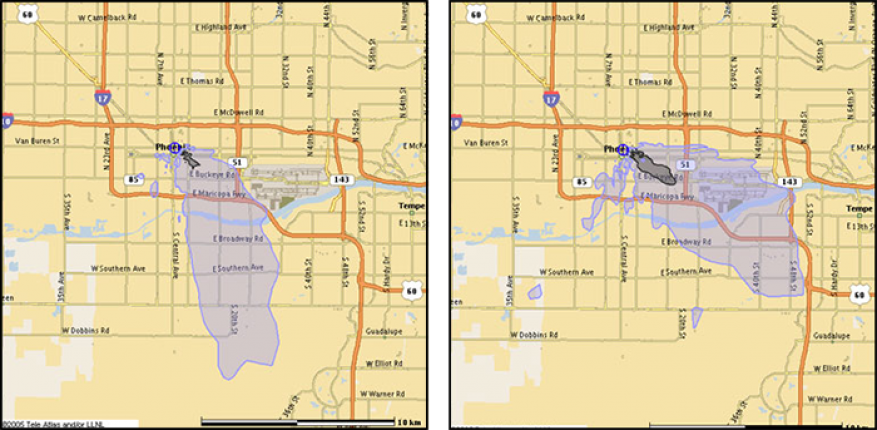NARAC has investigated the feasibility and benefits of using weather-radar derived wind data for atmospheric dispersion model applications in collaboration with Pacific Northwest National Laboratory (PNNL). Wind profiles generated from Next Generation Radar (NEXRAD) radial velocity data and PNNL’s two-dimensional variational (2DVAR) wind retrieval algorithms were assimilated into NARAC’s meteorological data assimilation model ADAPT and used to drive LODI atmospheric dispersion calculations at selected locations. A statistical and graphical analysis showed that simulations that incorporated NEXRAD data produced air concentrations and deposition patterns that were significantly different than results relying solely on standard surface and upper air weather observations in approximately one-third of the test cases studied.
Published
Simpson, M., Newsom, R., (2010). Impact of NEXRAD Derived Winds on NARAC Dispersion Modeling, The 90th American Meteorological Society Annual Meeting, January 16–21, 2010, Atlanta, GA, LLNL-PRES-422465.





